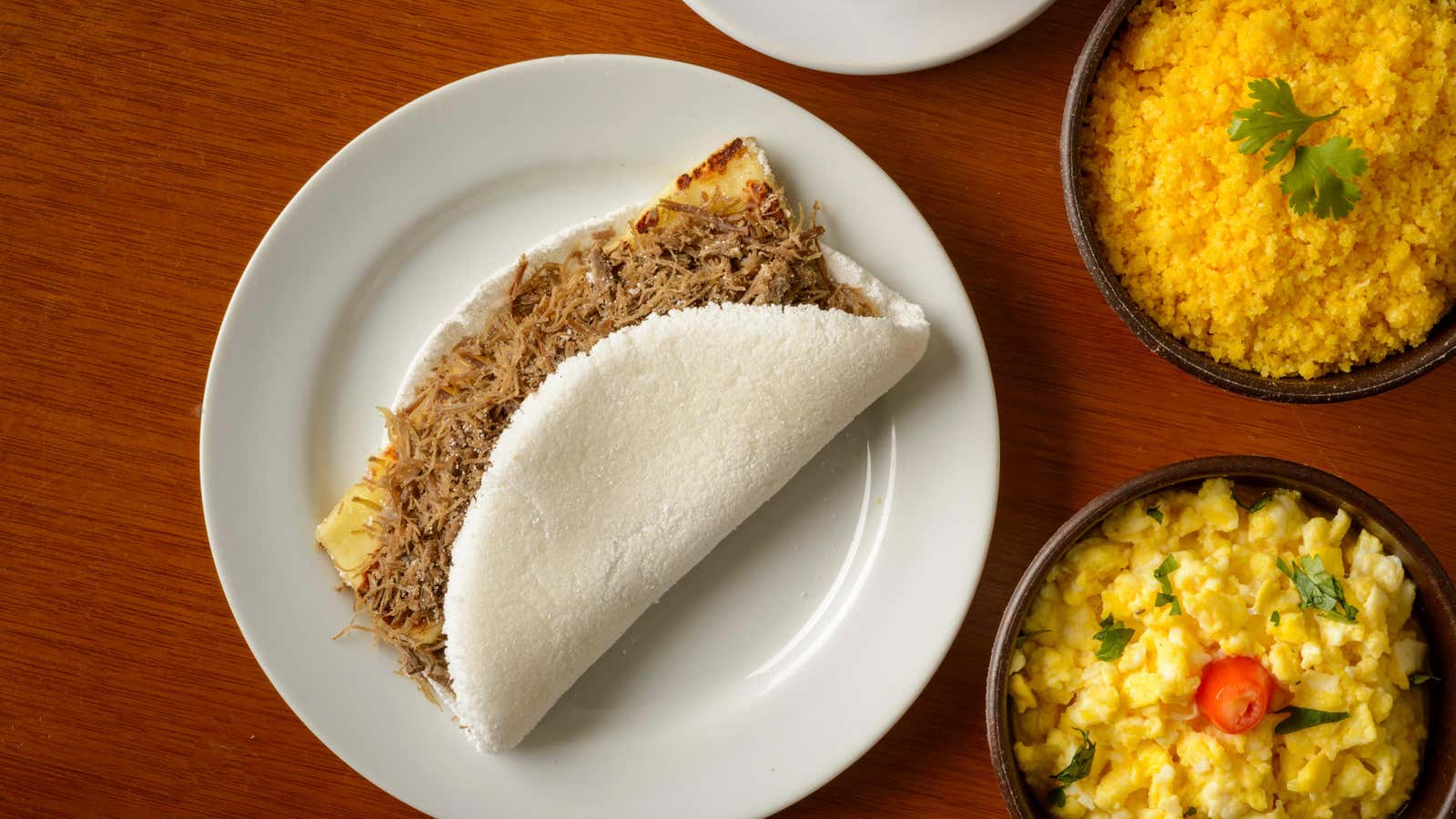Make a Crispy Tapioca Casing With Just Two Ingredients

The first thing that comes to mind when I hear the word tapioca is bean jelly balls, but this wonderful starch has another side that it would like to show you. With a minimum of ingredients and a bit of heat, you can make a crispy, tender, pancake-like shell that you can fill with a variety of ingredients, sweet or savory. All you need is some tapioca, which is starch.
This appetizer is worthy of a romantic, poetic name such as “goddess lace” or “cobertor de nuvem”, but in its homeland in Brazil it is simply called “tapioca”. Tapioca starch is made from the cassava root native to Brazil, making it a fairly common ingredient used in many regional dishes. Tapioca is usually eaten for breakfast but can be made at home any time of the day.
Tapioca starch is sold as a very fine powder and, like most starches, gelatinizes in the presence of liquid and heat. You may have eaten tapioca that was first boiled and then added to recipes such as bubble tea or tapioca pudding. This drug allows the starch to fully gelatinize, resulting in a food with a slippery, sticky texture. Tapioca, turned into a crunchy shell, is only slightly hydrated. Moist pieces in contact with a hot pan gelatinize and the top dries to form a thin, crispy shell with a slightly chewy layer in the center. It’s sensational.
All you need to make a tapioca shell is tapioca starch and some water. Add tapioca starch to a small bowl. I like to add a pinch of salt to give the shell some flavor. Add some water and mix with your fingertips. You will find that the consistency is odd (some might say ” non-Newtonian “), much like how cornstarch works with water. Stir the mixture, breaking it into pieces so that the starch is evenly moistened. Add some more water and mix again until you get medium sized clumps. If the mixture looks runny, add some more starch; it should be dry, but not completely powdery.
Put a handful in a sieve and hold over a hot frying pan. Instinct may tell you to oil the pan, but everything is done dry. Use your hand to push the tapioca through a sieve into the pot. It will look like artificial snow or tiny pieces of Styrofoam. Try to get an even layer on the bottom of the pan. You can cover the whole bottom, just to make it easier for yourself. If it rises in the center, use a spoon or spatula to move a little from the thick areas to the thin areas. The layer should be about half a centimeter thick. Stay on the thicker side as it is easier to flip and fold. After about 30 seconds, gently nudge the pancake and you will see that it starts to gel and stick together even though it looks dry. Flip the tapioca over and press it down. Fill quickly, fold in half and serve.
You can fill them with absolutely anything you like, including sweet or savory, so enjoy exploring. Try Black Forest ham and brie, shredded pork and smoked gouda, scrambled eggs and hot sauce, or Nutella and sliced bananas. Keep in mind that tapioca shells only take a few minutes to cook once they’re in the pan. Prepare the ingredients so you can fill and fold it while the shell is still flexible. In the following recipe, hydrated starch is enough for two tapioca shells, but can easily be doubled, tripled, or quadrupled. Tapioca shells don’t keep well, so it’s best to enjoy them right away.
brazilian tapioca
Ingredients:
- 4 tablespoons tapioca starch
- A pinch of salt
- 2-3 tablespoons of cool water
- Sweet or savory toppings
Mix tapioca starch and salt in a small bowl. Add one tablespoon of water at a time, mixing between additions with your fingertips. When the tapioca sticks together in hydrated clusters but doesn’t get sticky, it’s ready to drink.
Heat a skillet over medium heat. Drain half of the mixture into a sieve and rub it over the pan until it covers the entire bottom of the pan. Let the tapioca heat up for about 30 seconds. Push the pancake up and when it’s sticky, flip it over with a spatula. Let the other side cook while you sprinkle the filling on the tapioca. Roll it into a crescent shape and serve hot.